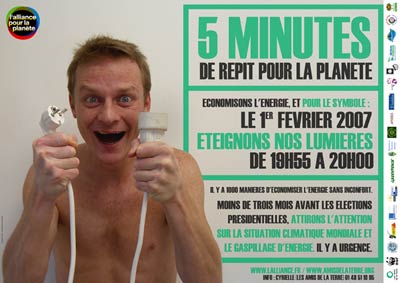
There’s a big conference at the State Capitol today on climate change. They’re smart enough not to call it global warming, because it’s nine degrees today, -4 with the windchill, and this is as warm as it Later. I walked. Stood outside for seven minutes, wishing I had a hat. I have a hat, but I didn’t wear it. Wish I had, is all I’m saying. After lessons and piano and nap (me, not her) we went to choir. I picked up the Joseph Mitchell book, and while Gnat had pizza and chatted with friends before choir I read the end of “Joe Gould’s Secret.” I know I’ve mentioned this before – rent the movie or google the name for the whole tale. Short version: New Yorker writer does a long profile on a quirky Greenwich Village nutball, which results in said nutball’s inevitable immortality and momentary fame amongst the New Yorker demographic. Joe Gould was the sort of person I remember from college days; Dinkytown was the Village of Minneapolis, which doesn’t say much about Dinkytown or Minneapolis. But that’s where sad smelly half-mad alcoholics went to parade their academic pretentions, and since I worked in a cheap-beer bar I met plenty of them. Anyway. Mitchell wrote two stories: one which built up Joe, and one which brought him down. The latter was written many years after the first, after Joe’s death, and it revealed Gould as a liar and a sad rank hobo. It’s a testament to Mitchell’s craft that Gould is interesting at all; he was obviously a tiresome, wheedling nudge with a tenuous claim on the public’s attention, but he had something. Think of it: a bum with a few published credits in the smart magazines, known mostly for showing up at parties in lice-ridden clothes and amusing everyone with his patter about a million-word oral history of New York. People believed, because they wanted to believe that the city teemed with unrecognized geniuses cast into the gutter by the Cruel Hand of a trivial, superficial commercial society. So the smart set sketched his likeness. They took his picture. (Personage, literary! The hair says it all, frankly.) And they painted his picture. (NSFW.) According to the book, Gould bothered Mitchell with requests to see a certain artist about a certain painting – a portrait so lewd and shocking it would someday be famous. Gould said it would even hang in the Whitney. As I read Mitchell’s account of finding the artist and locating the portrait, I had a sudden feeling of impatience and disconnectedness. I wanted to type and click and see it on a web page now. If it wasn’t on the web, well, I wanted to know that too. But I was in a church basement eating pizza. There was a computer in the building, but it was upstairs in the office, behind a locked door. That feeling – the certainty that all knowledge was available somewhere else – describes exactly how I felt as a kid in Fargo sometimes. I think it’s why so many of us left home. When I got home I did a search. Sure enough: the painting is on the web. It’s a story about the painter’s posthumous exhibit. At the Whitney. Bonus fun: Susan Sarandon played the painter in the movie. The mystique of Joe wafts through the ages, undiminshed. But some Pine-Sol might help. Accomplished less tonight than I intended, but I did manage to get a few more scans from the book, as well as some new items for the store. The Computer Programmer shirt is now available in season-appropriate long sleeves, as well as black. But only for a limited time! It will be replaced soon with a Bleat shirt – but the graphic is now available as a coffee mug. Here you go: It’s based on an old royalty-free fruit crate label:
I also would like to pass along an ad from 1962, another cast-off that didn’t make the book, possibly because it’s not about fake Indians who sell housepaint:
Clever, the way they slipped in the obligatory HOW. Interesting how some clichés fade; “ugh” and “how!” and “heap” I recognize as 50s movie-western Indian talk, but “gonna” lost its connection over the years. There’s another ad on the facing page:
You have to wonder what compelled them to choose this particular campaign. It’s like featuring a 19th century English bureaucrat who says “Planning on curing that bison hide, what? Best flense it proper! Look for the sharpened bone-tool with the Etonian on the handle.” It’s a question of expertise. Elsewhere: They’re turning off the Eiffel tower to save the planet. The tower – which is the largest metal refutation of the concept that sometimes a cigar is just a cigar – is probably fueled by nuke-juice, but never mind. It’s going off to set a good example. Let us all be inspired by the darkness. It seems to be part of a general French effort spearheaded by some toothless meth-freak:
(via Tim Blair, SuperGenius.) All lights will be turned off for five minutes to show concern. After which the lights will be turned back on, of course. It’s a peculiar inversion: the height of civilization now consists of undoing the plug, not connecting it. I’m not surprised that the latest predictions are more dire than the last. Panic is useful. As people of my age and ideological disposition are so tiresomely fond of reminding everyone, global cooling was the big fear way back when; mastodons would burst from glaciers and stomp our houses flat. After that came the population bomb, which would make the earth look like a crouton covered with a billion ants. (People would be literally hanging off the edge of the planet! The editorial cartoons said so!) Then came resource depletion (I still remember debating this in high school tournaments; if the affirmative side came up with a shale oil solution, I would confidently cite sources that proved shale oil would never be economically viable. Never. Never ever. So don’t even try. We – are – screwed.) Then came nuclear winter, which was the subject of a very special edition of the New Yorker and greatly influenced the lyrics of a cautionary song by Sting. In the 90s, when things were good, we worried about meteors, or “undocumented geological visitors.” I’m not saying the planet isn’t warming; probably is. I’m not saying man has no role; quite possible. But I’m stupid enough to believe that natural climate cycles and/or solar influence cannot be ruled out, and that the complex mysteries of the global climate cannot be influenced by a handful of Gauls foreswearing machine-made espresso-foam for a 300 seconds. If I’m wrong, I’m wrong. I have more pressing concerns, to be honest. I’m all scared out when it comes to Imminent Planet Death Scenarios. Cue the angry anonymous emailer using an identity-shielding proxy to accuse me of fearing Islamic terrorists, who never posed a threat to anyone. (Really: I got that last week. They’re just goofy little god-bots hopping from one leg to the other, and anyone who thinks that unassimilated Islamists pose a threat to Western values is a scairdy-lamb who probably thinks thunder means the clouds are angry because I took an extra cookie when Mommy’s back was turned.) Whoa: late. And I’m just ranting for no particular reason. Sorry! New Quirk. See you tomorrow. And visit the store! Buy a mug! Or not.
|
 |


 will get for the next three days. I imagine they would be horrified to learn what I’m doing while they pass around the palaver: I am driving to the bus stop to pick up my child. Note: the bus stop is a half a block away. I’m going to warm up the car, sit by the bus stop while the interior gets comfy and toasty; when the bus comes, I will pick her up and drive half a block to home. Sorry, Planet. You don’t want me to stand outside freezing while waiting for the great arbitrarily scheduled bus to appear? Then make with the volcanos. But not in my backyard, of course.
will get for the next three days. I imagine they would be horrified to learn what I’m doing while they pass around the palaver: I am driving to the bus stop to pick up my child. Note: the bus stop is a half a block away. I’m going to warm up the car, sit by the bus stop while the interior gets comfy and toasty; when the bus comes, I will pick her up and drive half a block to home. Sorry, Planet. You don’t want me to stand outside freezing while waiting for the great arbitrarily scheduled bus to appear? Then make with the volcanos. But not in my backyard, of course. 



